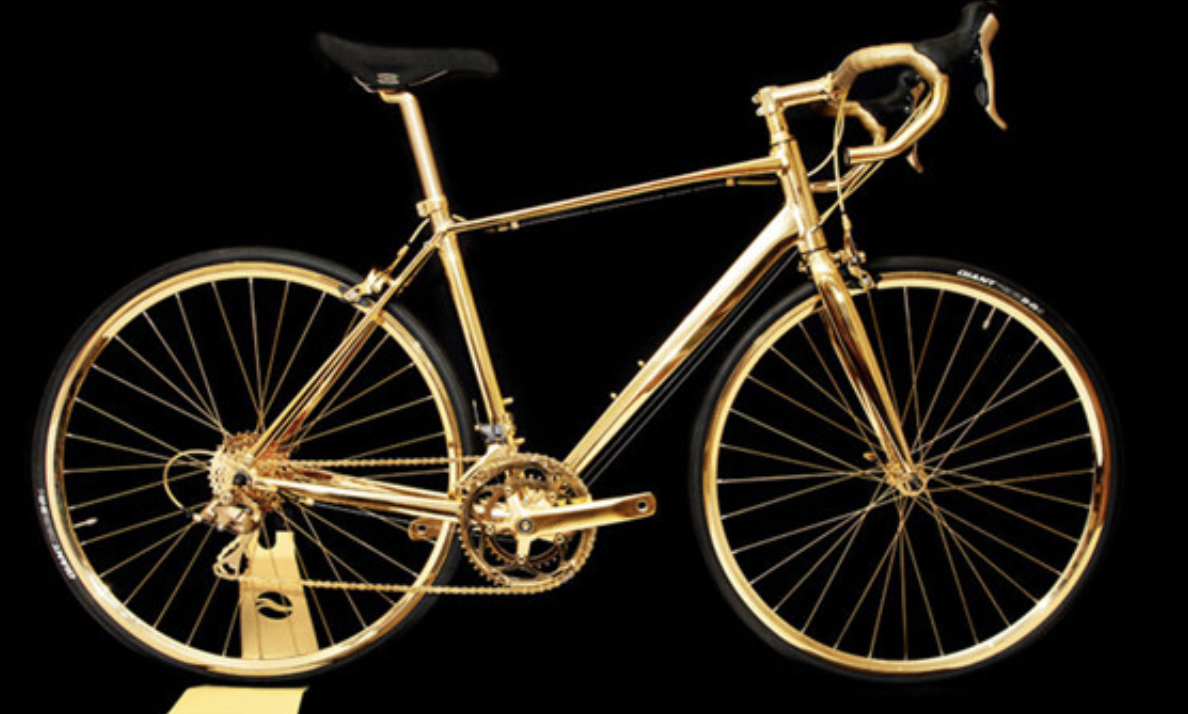|
The Bike That Costs More Than a Sports Car (2015)
Here’s a bicycle that won’t be left out in the rain – or left anywhere, in fact. British company Goldgenie, which specializes in creating personalized gold-plated gifts, has covered a Giant men’s racing bike with 24-karat gold. The $380,000 price tag makes it more expensive than most luxury sports cars – and that doesn’t even include a lock. Every part of the bike structure has been coated in the precious metal, right down to the cogs, spokes and ridges of the gear chain. The only bits that haven’t been embellished with bullion are the saddle, which is covered with San Marco suede, the tires and some other small parts. Goldgenie, which also sells gold-plated iPhones, handguns and car badges, adorns the bike with diamonds for the finishing touch. They might want to throw in a security guard as well. China: No Need for the Mall (2015) China’s e-commerce market isn’t just growing; it surpassed the U.S. in 2014 to become the biggest business-to-consumer market in the world. Credit Suisse estimates that Chinese e-commerce accounted for 9.7 percent of retail sales in 2014, with 368 million people — 56 percent of all Chinese Internet users — buying online. Part of the story is that logistics are improving, meaning there’s better infrastructure to deliver online orders. That’s helped retailers expand their offerings to include new categories of online stores such as food and drink, maternity, cosmetics, and healthcare. What’s most notable about China’s market is its relative lack of brick-and-mortar locations: in 2013, China’s retail space was only 0.6 square meters per capita, compared to 1.3 square meters in the U.K. and Japan and 2.6 square meters in the US. Since it’s quicker and easier to build an online shop than a real-world store, e-commerce growth in China seems bound to continue. By 2016, online sales should account for 13.4% of retail sales, according to Credit Suisse. Could Mexico Tighten More Than Expected? (2015) Mexico’s central bank may hike interest rates more than Wall Street expects this year. Credit Suisse forecasts a full percentage-point increase in the overnight rate to 4.0 percent from 3.0 percent, while market consensus forecasts the rate will sit at 3.6 percent by year-end. The reasons for the more hawkish call? The peso has lost 12 percent since September, and that could endanger the bank’s 3 percent inflation target, especially after it missed targets in 2014. Conversely, higher rates could help show the bank’s resolve to strengthen the peso and fight inflation. The bank cut rates by 1.5 points in 2013-14, giving it space to tighten monetary policy. As Credit Suisse analyst Alonso Cervera asks, “If this is not the time to undo these cuts, then when?” These articles were first published in 2015 in The Financialist
0 Comments
Leave a Reply. |
JENS ERIK GOULDJens Erik Gould is the Founder & CEO of Amalga Group, a pioneering Texas-based nearshore outsourcing firm specializing in IT, software engineering, and contact center staffing. Archives
February 2024
Categories |

 RSS Feed
RSS Feed